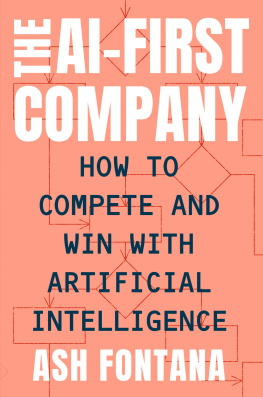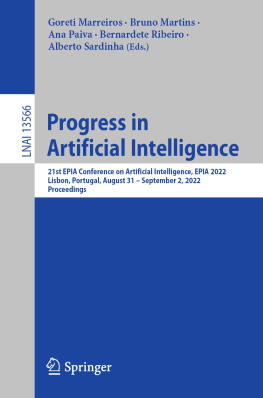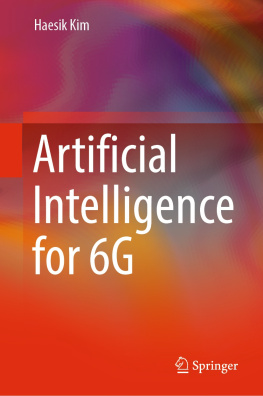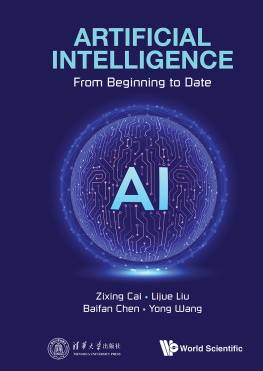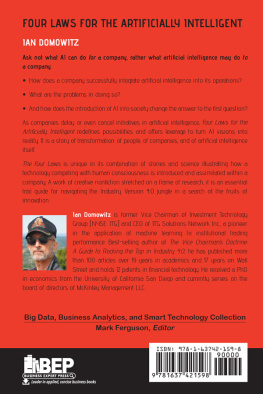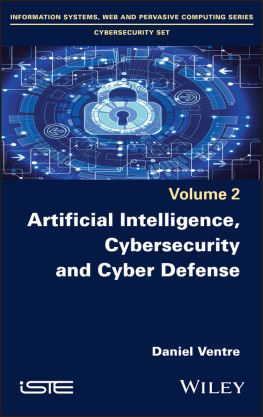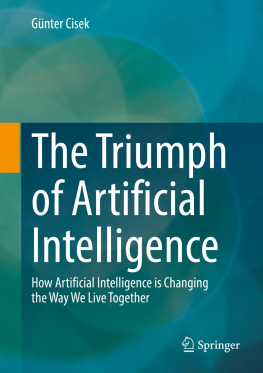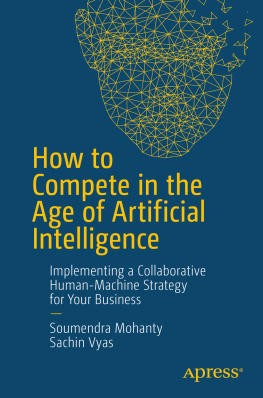Ash Fontana - The AI‑First Company: How to Compete and Win with Artificial Intelligence
Here you can read online Ash Fontana - The AI‑First Company: How to Compete and Win with Artificial Intelligence full text of the book (entire story) in english for free. Download pdf and epub, get meaning, cover and reviews about this ebook. year: 2021, publisher: Penguin Publishing Group, genre: Politics. Description of the work, (preface) as well as reviews are available. Best literature library LitArk.com created for fans of good reading and offers a wide selection of genres:
Romance novel
Science fiction
Adventure
Detective
Science
History
Home and family
Prose
Art
Politics
Computer
Non-fiction
Religion
Business
Children
Humor
Choose a favorite category and find really read worthwhile books. Enjoy immersion in the world of imagination, feel the emotions of the characters or learn something new for yourself, make an fascinating discovery.
- Book:The AI‑First Company: How to Compete and Win with Artificial Intelligence
- Author:
- Publisher:Penguin Publishing Group
- Genre:
- Year:2021
- Rating:5 / 5
- Favourites:Add to favourites
- Your mark:
- 100
- 1
- 2
- 3
- 4
- 5
The AI‑First Company: How to Compete and Win with Artificial Intelligence: summary, description and annotation
We offer to read an annotation, description, summary or preface (depends on what the author of the book "The AI‑First Company: How to Compete and Win with Artificial Intelligence" wrote himself). If you haven't found the necessary information about the book — write in the comments, we will try to find it.
Ash Fontana: author's other books
Who wrote The AI‑First Company: How to Compete and Win with Artificial Intelligence? Find out the surname, the name of the author of the book and a list of all author's works by series.
The AI‑First Company: How to Compete and Win with Artificial Intelligence — read online for free the complete book (whole text) full work
Below is the text of the book, divided by pages. System saving the place of the last page read, allows you to conveniently read the book "The AI‑First Company: How to Compete and Win with Artificial Intelligence" online for free, without having to search again every time where you left off. Put a bookmark, and you can go to the page where you finished reading at any time.
Font size:
Interval:
Bookmark:
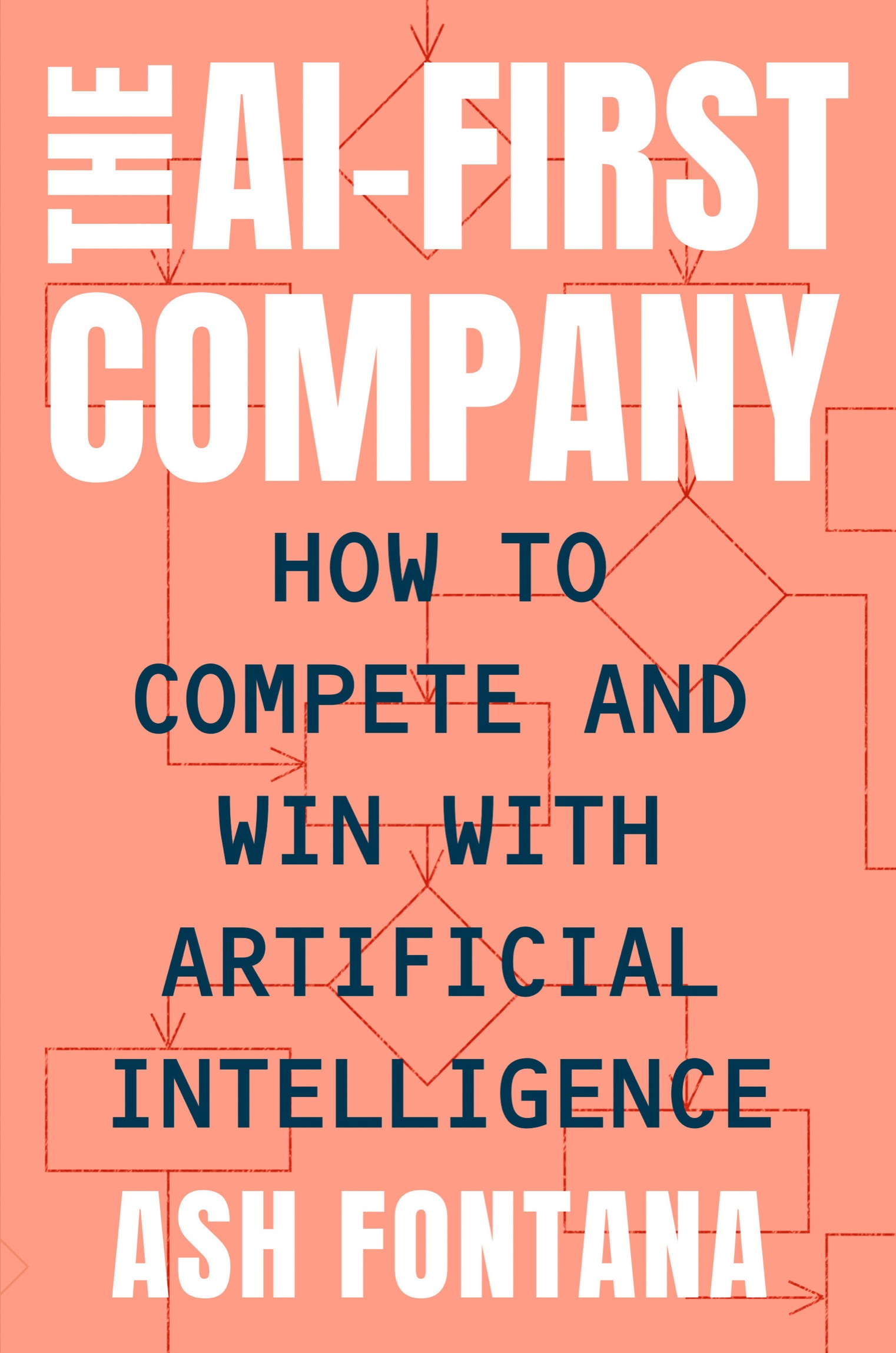
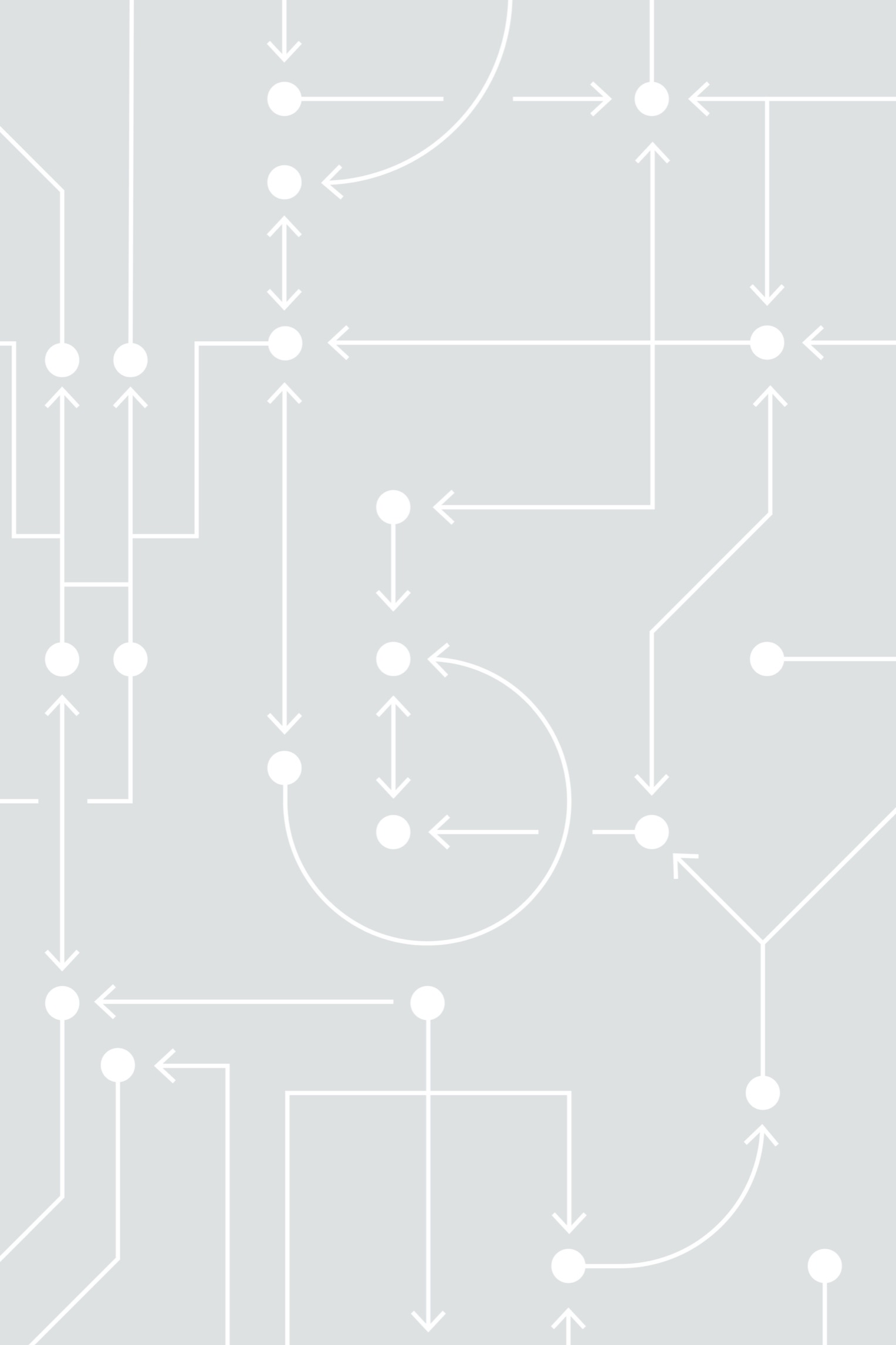
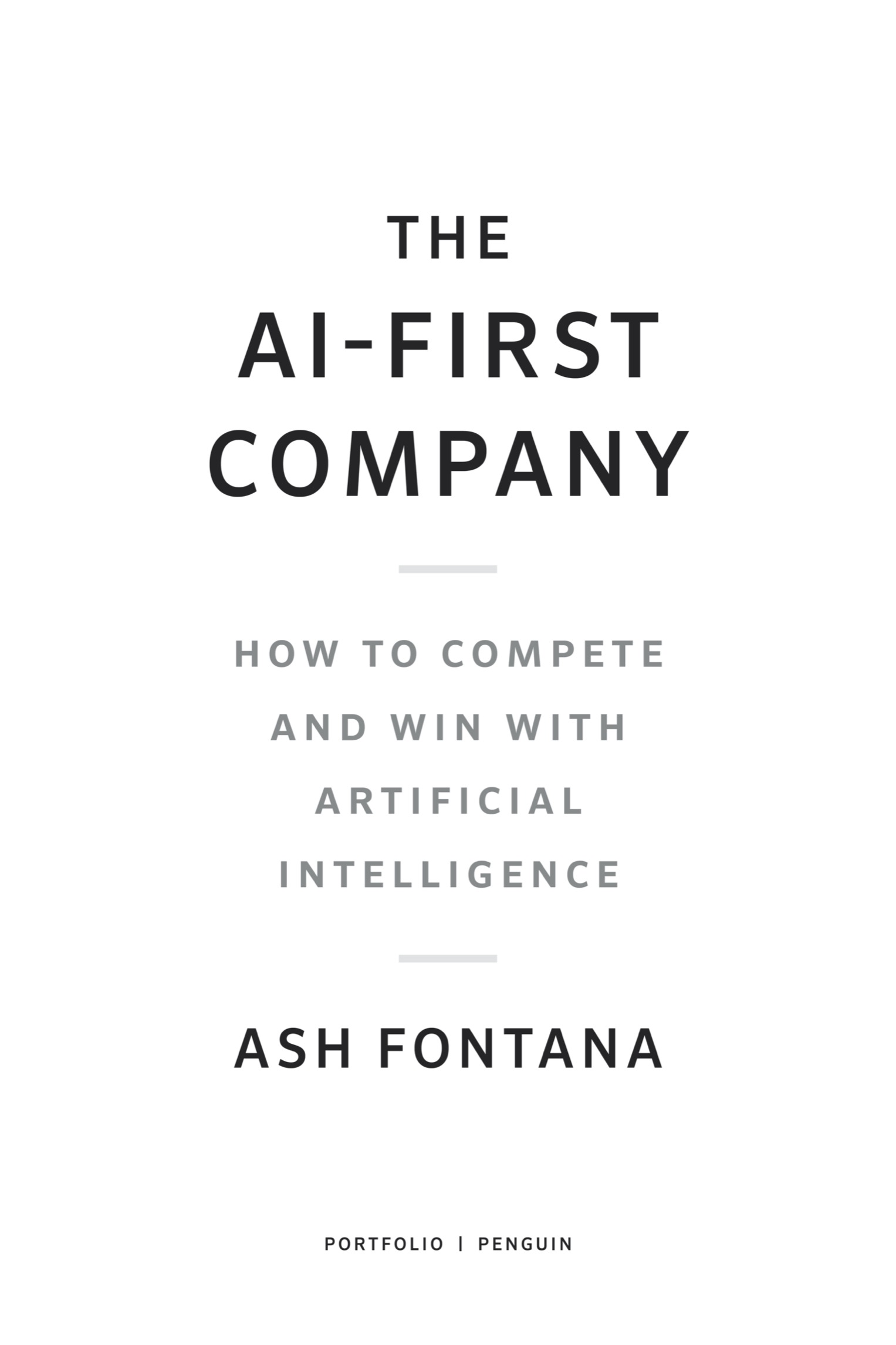

Portfolio / Penguin
An imprint of Penguin Random House LLC
penguinrandomhouse.com

Copyright 2021 by Ashley Fontana
Penguin supports copyright. Copyright fuels creativity, encourages diverse voices, promotes free speech, and creates a vibrant culture. Thank you for buying an authorized edition of this book and for complying with copyright laws by not reproducing, scanning, or distributing any part of it in any form without permission. You are supporting writers and allowing Penguin to continue to publish books for every reader.
Grateful acknowledgment is made for permission to reprint the following:
Design and visualization for artwork on pages by June 10th Creative Services.
All other artwork copyright 2020 by Fabiola Reina Design. All rights reserved.
Library of Congress Cataloging-in-Publication Data
Names: Fontana, Ash, author.
Title: The AI-first company : how to compete and win with artificial intelligence / Ash Fontana.
Description: [New York, New York] : Portfolio/Penguin, [2021] | Includes bibliographical references and index. |
Identifiers: LCCN 2020053301 (print) | LCCN 2020053302 (ebook) | ISBN 9780593330319 (hardcover) | ISBN 9780593330326 (ebook)
Subjects: LCSH: BusinessData processingManagement. | Artificial intelligenceIndustrial applications.
Classification: LCC HF5548.2 .F57 2021, (print) | LCC HF5548.2, (ebook) | DDC 658/.0563dc23
LC record available at https://lccn.loc.gov/2020053301
LC ebook record available at https://lccn.loc.gov/2020053302
Cover design: Sarahmay Wilkinson
Cover image: Alexsl / Getty Images
pid_prh_5.7.0_c0_r0
To the curious ones
The animal kingdom is full of creatures with better senses than us humans. We cant see like owls or smell like dogs or hear like whales, nor can we do arithmetic faster than a computera creature of our own creation. But we are great at gathering a lot of information across our senses and processing it in parallel to learn fast. Thislearning fastis the definition of intelligence.
Now artificial intelligence (AI) can help us learn faster by gathering valuable data, processing it into information, and spreading it across networks. Companies that build AI increase their own intelligence. Thats what this book is all about: building AI-First companies with extraordinary capabilities of gathering, processing, and communicating information to where its needed, when its neededto learn faster than the competition.
AI-First companies were the firstand are still the onlytrillion-dollar companies, and they will dominate more industries more definitively than ever before.
This is your guide to building an AI-First company.
We like to make new tools and, by doing so, power through our natural limits. Charles Babbage, who arguably invented the first mechanical computer, said, It is not a bad description of man to describe him as a tool-making animal. We use our intelligence to learn how things work and build tools to make them work betterturning the gradual evolution of man into the fast revolution of man plus machine.
The first wave of tools, during the Stone Age, at least 2.6 million years ago, brought physical leverage. Think rope traps and spears. These allowed us to go beyond our immediate, physical reach to gather more food than we could with our bare hands. The industrial era of the eighteenth and nineteenth centuries brought us increasingly complicated sets of tools that worked in harmony to plow fields and mill steel. However, this physical leverage and scale were limited by our intellectual capacity.
The second wave brought intellectual leverage. The printing press distributed information, but then computers allowed us to gather more information and perform computations beyond our ordinary intellectual reach. We learned how to move information around, throw it into a calculator, quickly send it to different places, and generate multiple insights. However, this intellectual leverage was limited by how much information we could acquire about the future.
Artificial intelligence brings the third wave of tools that give us decision-making leverage. These tools are affording us an entirely new form of intelligence that gathers, processes, and communicates information to make better decisions. Were learning better and faster as we see these decisions play out.
Lets thread a needle: in the first wave, it was possible to stitch fabrics faster than we could weave by hand using looms full of little levers. Physical leverage. In the second wave, computers turned drawingsvisual informationinto patterns for the loom to automatically weave. Informational leverage. The third wave changes the game: computers scan photos posted on social media, figure out consumer trends, draw up new styles and turn drawings into patterns for the loom. New styles hit the stores right as they become fashionable. Temporal leverage.
Whereas earlier tools gave us physical and intellectual leverage, AI provides decision-making leverage that fulfills two important imperatives. The first applies to all of society: getting more out of our limited resources. The second applies to businesses: building a competitive advantage. Whereas land, labor, and capital were the resources leveraged to compete in the last millennium, information is now the resource to leverage. Whereas the leading companies of yesterday excelled at managing land, labor, and capital, tomorrows leaders will excel at managing information.
There are many books about using land, labor, and capital to win at business. This book is about using information to win.
The AI-First Century started in 1950 with the development of AI and will finish around 2050 with AI being fully deployed across all industries, so its not too late for you to get started on applying AI in your industry.
If the first fifty years, from 1950 to 2000, were about getting AI to work in the lab, then the next fifty are about getting AI to work for people, business, and society. Understanding how it took the better part of a century to get to this point makes recent innovations seem even more remarkable and highlights our readiness to integrate AI with business strategy. Weve thought AI was just around the corner for a long time, but it turns out that it was just getting started, and we are only now bringing working AIs into the real world.
Here is the story of the people who built AI, bit by bit, over the last half century. They are the ones who got us here, and you are the one who will take their work forward over the next half century with the help of this book.
Font size:
Interval:
Bookmark:
Similar books «The AI‑First Company: How to Compete and Win with Artificial Intelligence»
Look at similar books to The AI‑First Company: How to Compete and Win with Artificial Intelligence. We have selected literature similar in name and meaning in the hope of providing readers with more options to find new, interesting, not yet read works.
Discussion, reviews of the book The AI‑First Company: How to Compete and Win with Artificial Intelligence and just readers' own opinions. Leave your comments, write what you think about the work, its meaning or the main characters. Specify what exactly you liked and what you didn't like, and why you think so.

